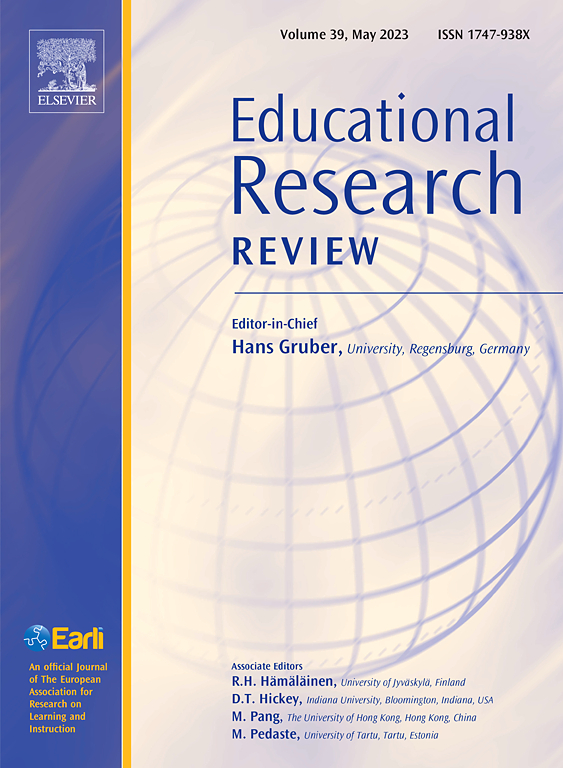Approaches to critical thinking in primary education classrooms: A systematic review
IF 10.6
1区 教育学
Q1 EDUCATION & EDUCATIONAL RESEARCH
引用次数: 0
Abstract
In this article, we investigate what characterises the international research literature on critical thinking in social studies, science education and language education in primary schools. Through a systematic review of 105 articles published in English between 2010 and 2021, we answer two research questions: 1) What characterises the research literature on critical thinking in primary schools regarding publication rate, geographical origin, method, grade level and school subject? 2) What characterises the studies focusing on classroom practices to develop critical thinking? The latter question includes three sub-questions, focusing on research methods, theoretical grounding and types of classroom approaches. The results from the review show an increased research interest in critical thinking in primary schools since 2017, especially in language education and science education. The publications were unevenly geographically distributed. The bulk of them were conducted in grades 4–6, with grades 1–2 representing the lowest number. A variety of theoretical approaches were represented, but several studies lacked a firm theoretical grounding in critical thinking theory. Through an inductive analysis, classroom approaches were categorised as textual, dialogic, digital or practical. Through the review, we show that the careful selection of subject content that can activate students in critical dialogue can be a fruitful approach to developing young learners’ critical thinking skills to foster well-rounded thinkers with a critical spirit. Further research is needed from a broader range of geographical contexts to probe the connections between different theoretical perceptions of critical thinking and their related concepts and to add knowledge about the development of critical thinking in grades 1–2.
小学教育课堂中批判性思维的方法:系统回顾
在这篇文章中,我们调查了关于小学社会研究、科学教育和语言教育中批判性思维的国际研究文献的特点。通过对2010年至2021年间发表的105篇英文论文的系统回顾,我们回答了两个研究问题:1)关于小学批判性思维的研究文献在发表率、地理来源、方法、年级水平和学校学科方面有什么特点?2)注重课堂实践培养批判性思维的研究有什么特点?后一个问题包括三个子问题,重点是研究方法,理论基础和课堂方法的类型。审查结果显示,自2017年以来,对小学批判性思维的研究兴趣有所增加,特别是在语言教育和科学教育方面。出版物在地理上分布不均。大部分是在4-6年级进行的,1-2年级的人数最少。各种各样的理论方法都有代表,但一些研究缺乏批判性思维理论的坚实理论基础。通过归纳分析,课堂教学方法可分为文本教学、对话教学、数字教学和实践教学。通过回顾,我们表明,精心选择能够激活学生批判性对话的主题内容,对于培养年轻学习者的批判性思维技能,培养具有批判性精神的全面思考者是一种富有成效的方法。需要在更广泛的地理背景下进行进一步的研究,以探索批判性思维的不同理论观念与其相关概念之间的联系,并增加关于1-2年级批判性思维发展的知识。
本文章由计算机程序翻译,如有差异,请以英文原文为准。
求助全文
约1分钟内获得全文
求助全文
来源期刊

Educational Research Review
EDUCATION & EDUCATIONAL RESEARCH-
CiteScore
19.40
自引率
0.90%
发文量
53
审稿时长
57 days
期刊介绍:
Educational Research Review is an international journal catering to researchers and diverse agencies keen on reviewing studies and theoretical papers in education at any level. The journal welcomes high-quality articles that address educational research problems through a review approach, encompassing thematic or methodological reviews and meta-analyses. With an inclusive scope, the journal does not limit itself to any specific age range and invites articles across various settings where learning and education take place, such as schools, corporate training, and both formal and informal educational environments.
 求助内容:
求助内容: 应助结果提醒方式:
应助结果提醒方式:


